Buckwheat Millet Oat Bread
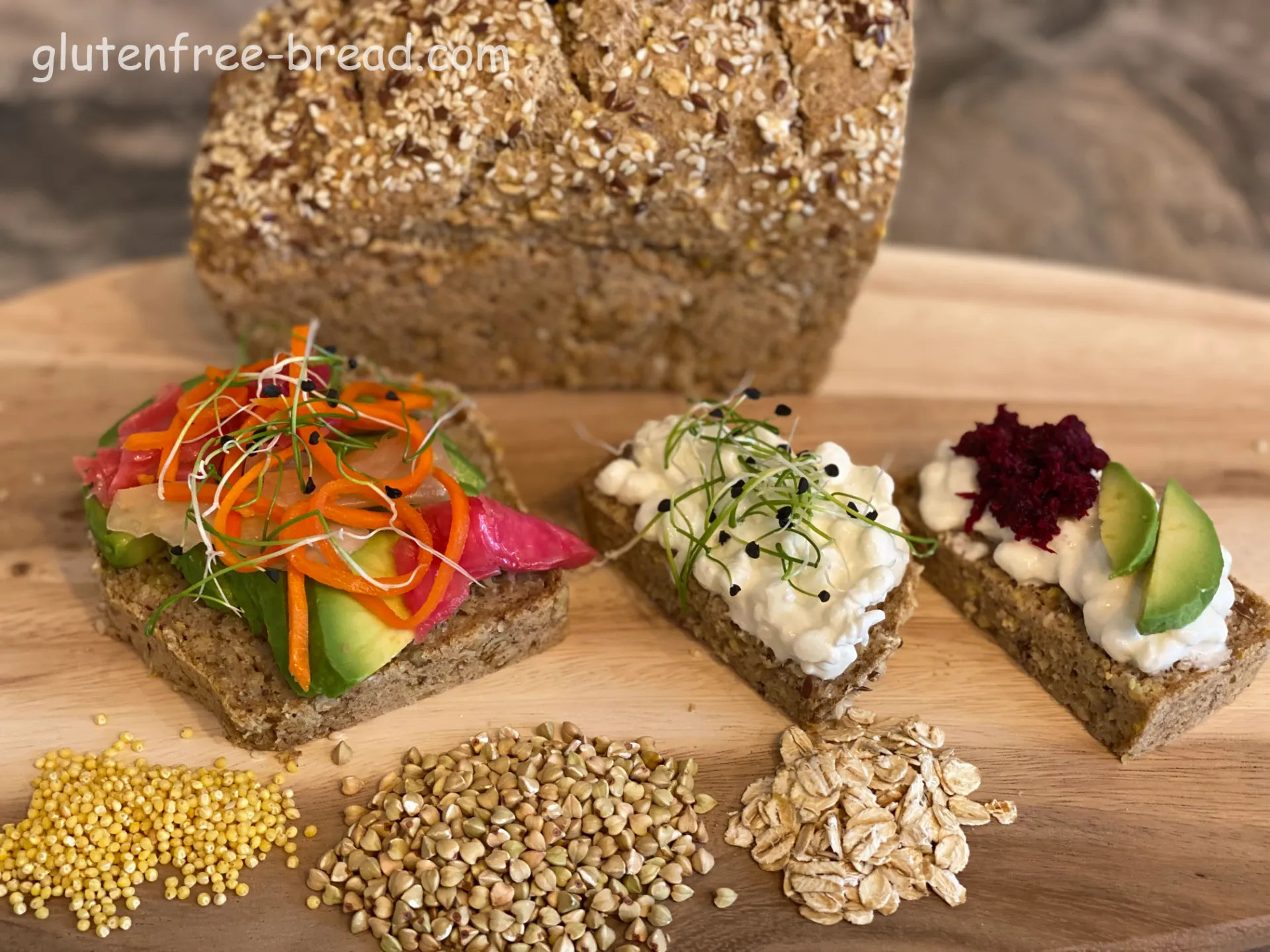
Ingredients:
| Name | Metric | US | TIP | |
|---|---|---|---|---|
| Raw Buckwheat Groats | 100 gr | 1/2 cup | ||
| Raw Millet | 100 gr | 1/2 cup | ||
| Water | 375 ml | 1 1/2 cups | ||
| Whole Psyllium Husks | 20 gr | 1/4 cup | ||
| Rolled Oats, divided | 120 gr | 1 1/4 cups | ||
| Baking Powder | 6 gr | 1 tsp | ||
| Sea Salt | 6 gr | 1 tsp | ||
| Vegetable Oil | 25 ml | 2 tbsp |
Optional Ingredients :
| 6 gr/ 1 tablespoon Sesame Seeds | |
| 6 gr/ 1 tablespoon Poppy Seeds | |
| 6 gr/ 1 tablespoon Sunflower Seeds | |
| 6 gr/ 1 tablespoon Pumpkin Seeds | |
| 6 gr/ 1 tablespoon Caraway Seeds |
Equipment:
| Blender | |
| Loaf pan 8.5in x 4.5 inch / 21.5cm x 11.5cm |
Steps:
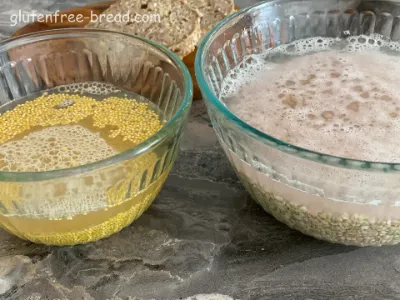
Step 1
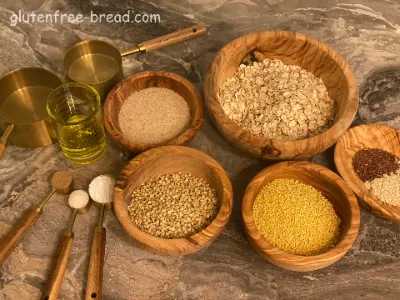
Step 2
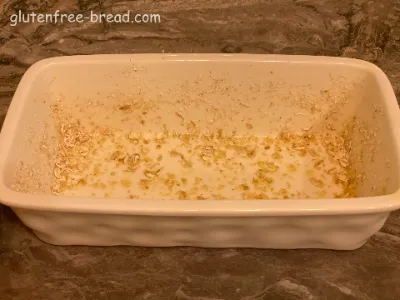
Step 3
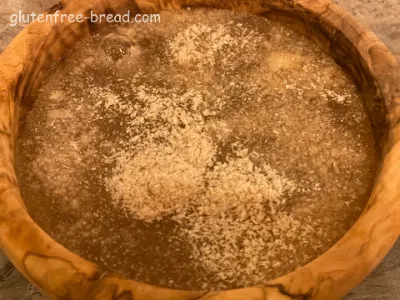
Step 4

Step 5
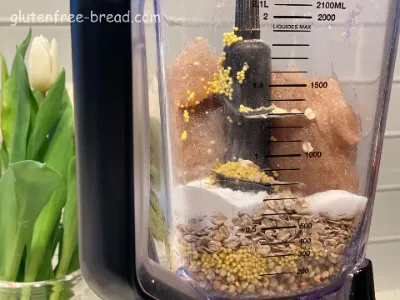
Step 6
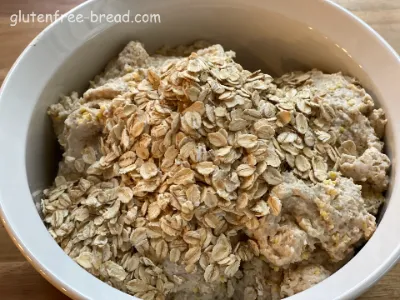
Step 7
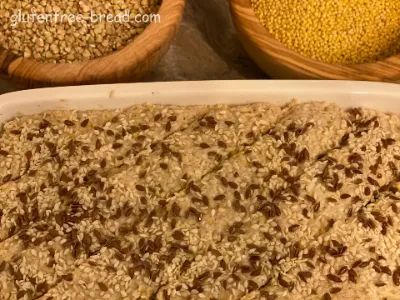
Step 8
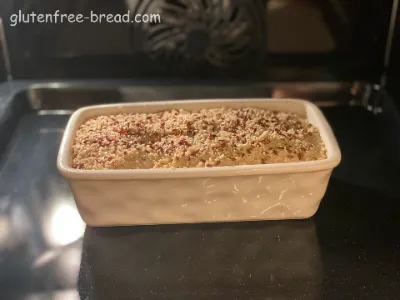
Step 9
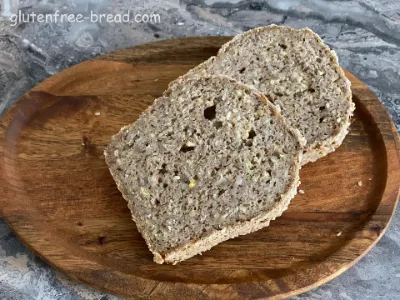
Step 10

Step 11
Notes:
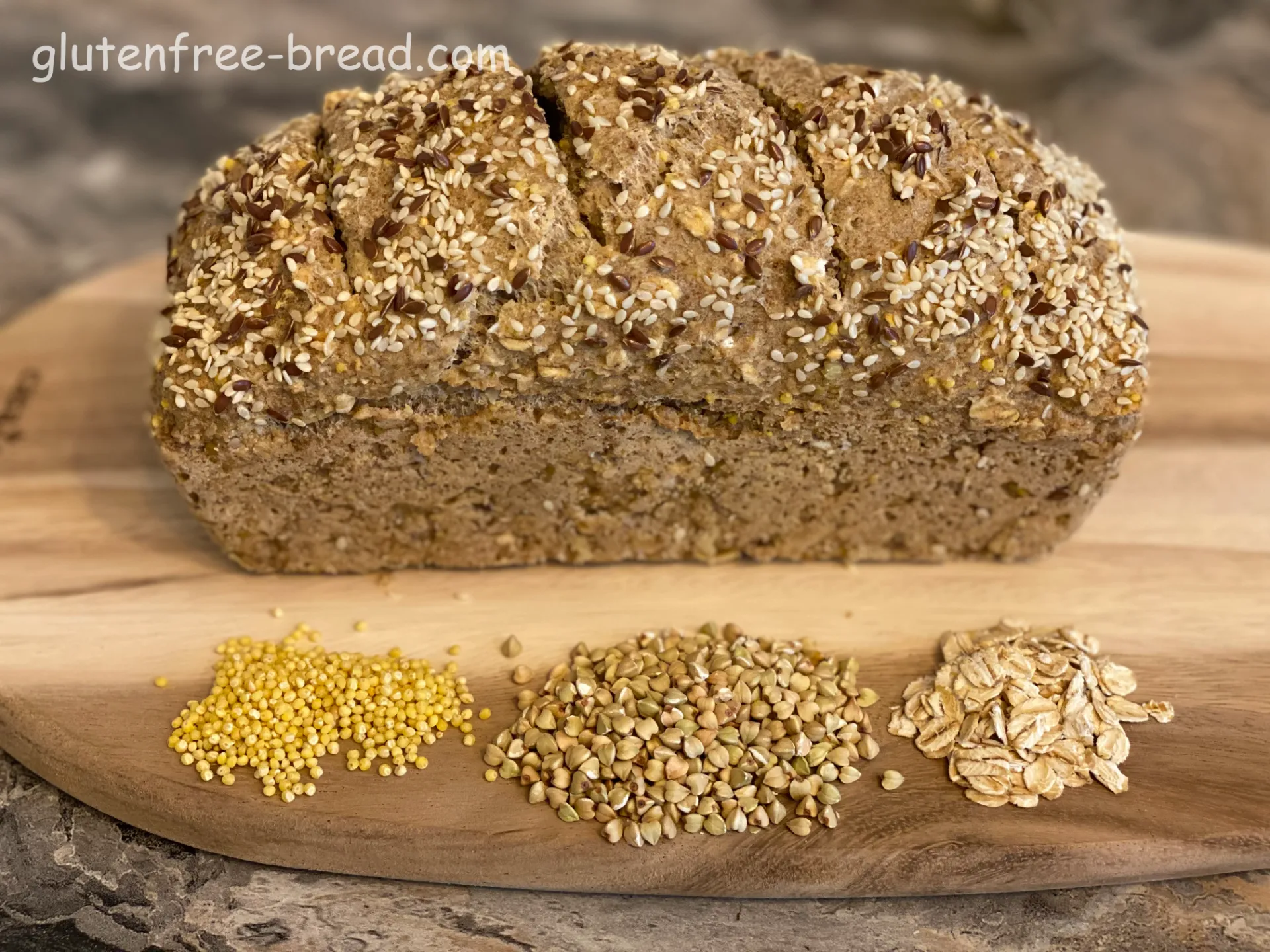
Buckwheat Millet Oat Bread
Scoring bread is an important step in the bread-making process for several reasons:
Controlled Expansion: When bread dough is placed in a hot oven, the yeast in the dough produces carbon dioxide gas, causing the dough to rise. Scoring creates weak points on the surface of the dough, allowing it to expand in a controlled manner during baking. Without scoring, the expanding dough may rupture randomly, leading to uneven rising and an undesirable appearance.
Even Baking: Scoring helps ensure that the heat penetrates evenly throughout the bread during baking. It allows steam to escape from the interior of the loaf, preventing the formation of large air pockets and promoting even baking. This results in a bread with a consistent texture and crumb structure.
Artistic Expression: Scoring provides an opportunity for bakers to express their creativity and personalize their loaves. Different scoring patterns can create visually appealing designs on the surface of the bread, enhancing its aesthetic appeal.
Prevents Bursting: Scoring helps prevent the crust from bursting open in random places during baking. By creating controlled weak points on the surface of the dough, scoring allows steam to escape without causing the crust to tear or deform.
Improves Oven Spring: Proper scoring can improve the oven spring, which refers to the final burst of rising that occurs in the oven during the first few minutes of baking. This results in a bread with a lighter, airier texture and a well-developed crust.
Overall, scoring bread is essential for achieving a beautifully risen loaf with an attractive appearance and excellent texture. It plays a crucial role in ensuring even baking, controlled expansion, and a visually appealing final product.
Buckwheat Millet Oat Bread additional information:
Let's delve into more detail about the nutritional benefits of each grain in Buckwheat Millet Oat Bread:
1. Buckwheat:
- High in Protein: Buckwheat is a good source of plant-based protein, containing all nine essential amino acids.
- Rich in Fiber: It's high in both soluble and insoluble fiber, which aids digestion, promotes satiety, and helps regulate blood sugar levels.
- Gluten-Free: Buckwheat is naturally gluten-free, making it suitable for individuals with celiac disease or gluten sensitivities.
- Rich in Antioxidants: It contains antioxidants like rutin and quercetin, which have anti-inflammatory and heart-protective properties.
- Mineral-Rich: Buckwheat is a good source of minerals such as magnesium, manganese, copper, and phosphorus.
2. Millet:
- Gluten-Free: Millet is naturally gluten-free, making it suitable for gluten-sensitive individuals.
- High in Protein: Millet is relatively high in protein compared to other grains, providing essential amino acids.
- Rich in B Vitamins: It contains various B vitamins, including niacin, thiamine, and riboflavin, which are essential for energy metabolism.
- Mineral-Rich: Millet is a good source of minerals such as magnesium, phosphorus, and manganese, which are important for bone health and enzyme function.
- Low Glycemic Index: Millet has a low glycemic index, meaning it does not cause a rapid spike in blood sugar levels.
3. Oats:
- High in Soluble Fiber: Oats are particularly high in beta-glucan, a type of soluble fiber that helps reduce cholesterol levels and improve heart health.
- Rich in Antioxidants: Oats contain antioxidants called avenanthramides, which have anti-inflammatory and anti-itching properties.
- Heart-Healthy: Regular consumption of oats has been linked to lower blood pressure, reduced risk of heart disease, and improved blood sugar control.
- Source of Protein: Oats provide a moderate amount of protein, making them a valuable addition to a vegetarian or vegan diet.
- Low Glycemic Index: Oats have a low glycemic index, providing sustained energy and helping stabilize blood sugar levels.
Incorporating a variety of whole grains like buckwheat, millet, and oats into your diet can provide a range of health benefits, including improved digestion, heart health, and overall well-being.
The nutritional facts of buckwheat millet oat bread can vary depending on the specific recipe and ingredients used. However, here's a general overview of the potential nutritional benefits of such bread:
High in Fiber: Buckwheat, millet, and oats are all rich sources of dietary fiber, both soluble and insoluble. Fiber is important for digestive health, helps regulate bowel movements, and may contribute to lowering cholesterol levels.
Good Source of Protein: Buckwheat, millet, and oats contain significant amounts of protein, making this bread a suitable option for vegetarians and vegans looking to increase their protein intake.
Rich in Essential Nutrients: These grains are also packed with essential nutrients such as vitamins (B vitamins, vitamin E) and minerals (iron, magnesium, zinc). These nutrients are important for overall health and well-being.
Gluten-Free: Buckwheat, millet, and oats are naturally gluten-free grains, making this bread suitable for individuals with gluten sensitivities or celiac disease.
Low Glycemic Index: Buckwheat, millet, and oats have a lower glycemic index compared to refined grains, meaning they are digested more slowly, leading to a gradual rise in blood sugar levels. This can help with blood sugar control and may be beneficial for individuals with diabetes.
Heart-Healthy: The combination of whole grains in this bread provides heart-healthy benefits, including reducing the risk of heart disease and improving overall cardiovascular health.
It's important to note that the nutritional content of bread can vary depending on factors such as portion size, additional ingredients (such as sweeteners or fats), and the specific proportions of each grain used in the recipe. Additionally, commercially produced bread may have added preservatives or other additives that can affect its nutritional profile. Therefore, it's always a good idea to check the nutrition label or inquire about the ingredients when purchasing or consuming buckwheat millet oat bread.
Proper mixing is important when making gluten-free quick breads, although there are some differences to consider due to the absence of gluten.
Distribution of Ingredients: Just like with traditional quick breads, it's essential to evenly distribute the ingredients throughout the batter to ensure a consistent texture and flavor in the final product.
Activation of Leavening Agents: Gluten-free quick breads still rely on leavening agents such as baking powder or baking soda to rise. Proper mixing helps ensure that these leavening agents are evenly distributed, promoting uniform rising during baking.
Texture and Structure: While gluten provides structure in traditional breads, in gluten-free breads, other ingredients such as eggs, xanthan gum, or guar gum often fulfill this role. Mixing helps incorporate these ingredients properly to provide structure and texture to the bread.
Incorporation of Air: Mixing incorporates air into the batter, contributing to the light and airy texture of the bread. This is still important in gluten-free quick breads to achieve a desirable texture.
However, there are a few additional considerations for mixing gluten-free quick breads:
Overmixing: Because gluten isn't present, there's no risk of developing tough, chewy bread due to overmixing. In fact, with gluten-free quick breads, you often want to mix the batter a bit more vigorously to ensure proper hydration of ingredients like rice flour or almond flour, which can be more prone to clumping.
Resting Time: Some gluten-free flours benefit from a short resting time after mixing to allow them to fully hydrate and develop their texture. This can vary depending on the specific recipe and type of flour used.
Overall, while the principles of proper mixing remain important in gluten-free quick breads, there may be some adjustments and considerations specific to the characteristics of gluten-free flours and ingredients.







